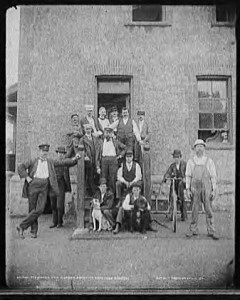
Florence Nightingale Suffered from Crimean Fever, Taking to Her Bed at Age 38 But Not Dying Until 90
Many of us refer casually to hypochondria as a condition in which a person thinks he’s ill when he’s not. Though the victim’s friends or family may see perfect health, the hypochondriac constantly fears or suffers feelings of illness. Hypochondria has afflicted people through the ages, but alienists in the twentieth century differentiated its degrees of seriousness.
The first stage of hypochondria was entirely mental: the person thought he was ill when he was not. The second stage began when he started to act ill and displayed symptoms consistent with the particular problem he believed he had. The third stage occurred when the person started to suffer from the actual condition; as one alienist noted, “Real disease, is, therefore, induced.”
Dr. William A. Hammond recalled a woman who believed she had suffered a disease of the tongue which caused it to fall off. Of course,the tongue was still there, but Hammond could not persuade her that it really was. Eventually, he decided to treat her with an aloetic purge, which he had seen recommended by a European alienist, Jacobus Schroeder van der Kolk. This purge consisted of a succotorine aloe (a medicinal aloe from Africa), castile soap, and a simple syrup, along with whatever else a doctor might choose to mix in. It was essentially a harmless concoction, but fell right in with the era’s belief that a good purge could do a world of good.
The purge dislodged “large quantities of hardened fecal matter” and restored the woman’s menstrual cycle, and within a month, “she was entirely free from all perceptional, intellectual, or emotional derangement,” said Hammond. To his credit, Hammond didn’t clash wills with the patient, but instead worked in a way that accommodated her illness and caused her the least harm.




